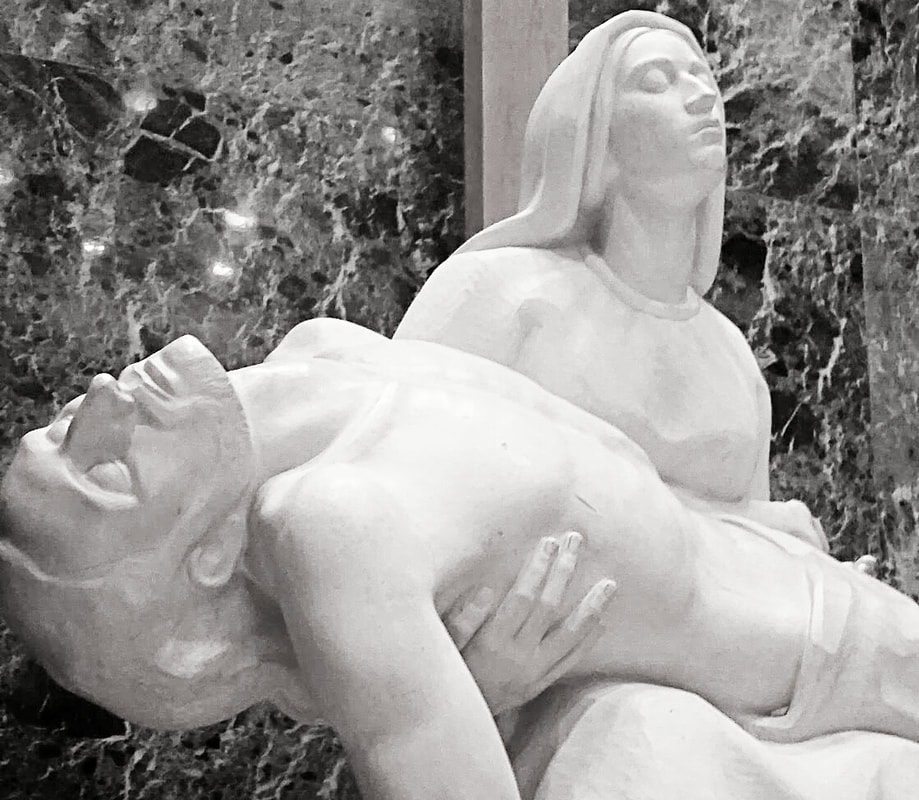|
They brought Jesus to the place called Golgotha (which means "the place of the skull"). ~ Mark 15:22 While still a student at Louisville Presbyterian Seminary, I was given the opportunity to spend one summer riding along with the chaplain for the city's police department. Since I was in class throughout the day, my time to ride along with their chaplain happened late into the night. It amazed me that the city that I thought I knew, could be so very different after the sun went down.
The lights of the car radio and oncoming headlights shone on our faces as their chaplain and I rode together on familiar streets, that now looked strange to me. I will never forget one of those nights when we responded to the scene where two teenage youth had gotten into a fight and one of the boys pulled out a knife during the battle, and stabbed the other to death. As we approached the scene, the chaplain shared with me just how violent the act of stabbing actually is. His knowledge of trauma caused by a knife, the strength it takes to push the knife into the human body, withdraw it, and the intimacy of the two, made the event sound like an orchestrated dance of violence. I could already feel my stomach beginning to turn as we approached the scene. A small crowd on a street corner, their shadows displayed with colors of red and blue as emergency vehicles encircled the area. I'm not sure what moved me more, seeing the victim, a young black teen, covered in blood on the sidewalk, or the cries of the boy's mother as she was standing, being held away by family members and friends, while we waited for the medical examiner to arrive. I thought to myself, "The boy is dead. Let the mother hold him," but that wasn't possible. "Protocol of the crime scene," is what I was told as a news crew arrived, and could be heard giving an update for the ten o'clock broadcast. I felt as if I couldn't breathe, and I turned away. I excused myself and went back to the car, where I sat, ashamed that I felt like I had failed in some way. Ashamed because I didn't know what to say, or how to react. Ashamed that a boy was dead and his mother couldn't even touch him, and I was somehow part of the "system," that failed them. There is not a single Good Friday that goes by that the image of this dead boy and his mother, doesn't cross my mind. The same streets where Thomas Merton stepped off a bus and realized that he loved everyone he saw, was the same streets where I discovered just how violent humanity can be towards one another, and that a mother can witness the death of her child and do nothing to save him. While Jesus was fulfilling some eternal plan created by God to answer our sinful and violent nature, a mother stood in the crowd, held back by friends and strangers, as her son hung, bleeding, and dying. I have often inserted the cries of that mother from the streets of Louisville, into the image that I have of that day years ago that we now proclaim as, "Good." Over twenty years later, death is part of my daily life, and the cries are different, but in many ways they are still the same. A son dies. A mother watches. The only difference is that now I don't turn away because death has become so much a part of my life, and I have to wonder if I were present on the day that Jesus died, would I struggle to find my breath again? Would I turn away, or would I watch? Would I listen for his last words, as I do now with each hospice patient? And would I be one with Mary, helping to hold her, as she watched and waited? Death doesn't appear in a valley. For Jesus it resided on a hillside. It resides in each of us. It is as much a part of us as the next breath we take. It waits for the moment when our heart forgets to beat, and then springs to life. Where are you in the crowd? "Behold the lamb who takes away the sins of the world." Stay in God's grip! G. Todd Williams (c) 2019 Comments are closed.
|
AuthorRev. G. Todd Williams is the author of the book, "Remember Me When..." and is a former hospice chaplain and pastor. Archives
February 2024
|

 RSS Feed
RSS Feed
